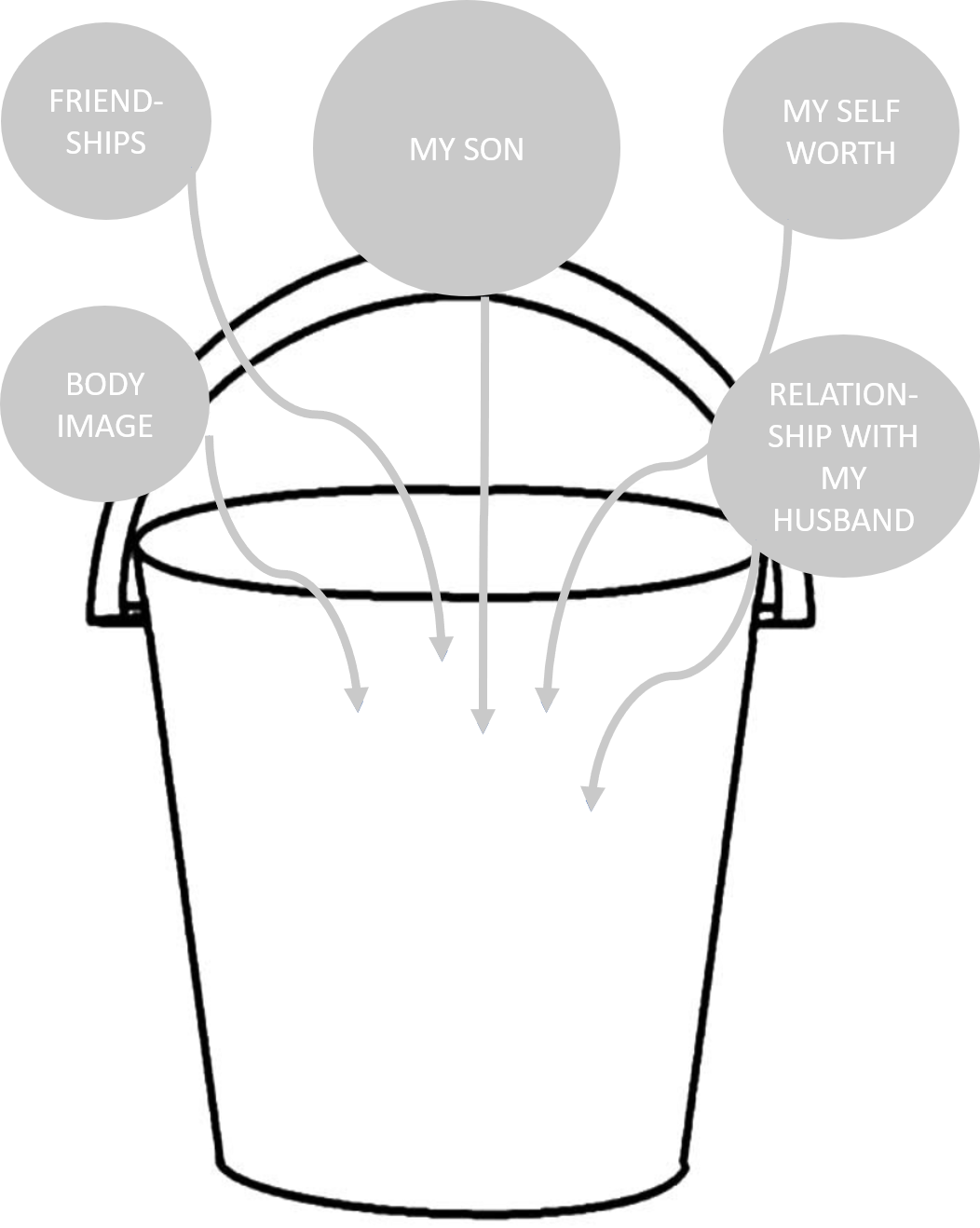Managing Anxiety with Buckets and Trees
We all experience negative thoughts and anxiety. It’s a part of life. But negative thoughts and anxiety can be hard for us to manage. Trying to deal with it can feel like we are swimming uphill. In this blog I want to share with you two coping strategies; the bucket of anxiety and the Worry Tree which may help you or your child if you are struggling with anxiety. I am not a trained counsellor or therapist; what I am sharing with you is my personal experience of managing my own mental health and supporting teenagers and parents to manage their mental health.
The Bucket of Anxiety
A few years ago, whilst attending the National Autistic Conference I learnt all about the bucket of anxiety and the concept has stayed with me ever since. Whilst talking to children and parents about this subject, I have always used the analogy of the bucket to help explain what happens when we start to become overloaded and how we can manage our buckets to support our mental health.
Inside all of us, we have a bucket of anxiety. Everyone’s bucket is a different size and the size can vary from one day to the next. For example, my bucket of anxiety is always much smaller around my period. For this analogy, I am going to use balls as the anxious thoughts or worries we experience. Balls of worry fall into our buckets all the time.
As more balls of worries fall in, our bucket of anxiety fills up. When the bucket is full, we may well experience a break down or shut down. At this point we cannot cope with anything else. So, in order to stop our buckets becoming full of balls we need to drill holes into our buckets. A hole is anything that helps us to destress. For example, a hole for me is doing exercise, talking to my husband, spending time with friends, having my nails done.
The more holes that are drilled into the bucket, the quicker the balls of worry leave our bucket of anxiety. The idea is that a ball of worry enters our bucket but then exits by one of our drilled holes. For example a ball of worry for me is my son not eating very much. The ball goes in and by me sharing my worry with my husband (a drilled hole), the ball of worry leaves my bucket.
Unfortunately, we can sabotage our buckets and drilled holes. When too many balls of worry enter our bucket of anxiety too quickly, our drilled holes can become blocked or we start intentionally closing them off. For example, after a night of poor sleep, a toddler refusing to do anything asked, a burnt dinner and a husband working late, I’m too tired to do exercise, speak to my husband, speak to friends so am effectively closing down the drilled holes. The balls of worry have nowhere to go and the anxiety builds. After many years I can now recognise when this is happening and can force myself to keep the holes open.
I found in my professional life that this strategy helped to support teenagers in independently managing their anxiety. However it is really, really important that we as parents / educators do not dictate what the holes in the bucket should be. All too often I have spoken to teenagers who have told me that a teacher or parent has told them they should have 5 minutes time out when they are struggling with an anxious thought. This strategy would work for some but others need someone to speak to. We cannot tell our children and young people what strategies will work for them. They need to do it by themselves with our support.
The Worry Tree
The second technique I use with children is the Worry Tree which can really help especially at night when the worries circulate and they struggle to get to sleep. I find it is a really useful tool to help understand how you can deal with worries and it can become one holes in the bucket of anxiety. It helps break down a problem to see whether or not you can do something about it. It then helps to think what action you can take about the worry.
The Worry Tree also helps to understand if the worry is a real worry or a hypothetical worry. A real worry is a worry we can do something about, for child my toddler running into the road. A hypothetical worry is a worry that you usually can’t do anything about so we can let this worry go.
There are 6 steps when using the Worry Tree:
1. Notice that I am worrying.
2. Understanding what the worry is about; what is the real problem?
3. Can I do something about it?
4. If I can do something about it, can I do it now or later?
5. Decide how and when I will take action to solve the worry. If I can’t solve it at this time, when will I solve it?
6. Let the worry go when I have taken the necessary action.
Here is a real-life example of me using the Worry Tree. This example was from when we were away on holiday in an AirBnb house; the house was a traditional country cottage where the front door opened straight onto the road from the living room. I became worried at about midnight that my then 20-month-old would run out of the house straight into a car. This worry wouldn’t go and I was struggling to fall asleep.
If you are supporting a child whose worries can spiral, this strategy can really help and this is why we have included this technique in our Feeling Awesome journal.
When I have worked with a child on the Worry Tree I have written down the responses they have given me to each stage. If it is a worry that can be let go, we have either torn it up or posted it into a worry box or a Worry Eater. This process can give a child or young person physical closure on the worry.
Please remember that I am not a trained therapist but have supported children and young people in school with their mental health. If you or your child are struggling with negative thoughts and anxiety please speak to someone. Struggling with your mental health is nothing to be ashamed of. Speak to your GP as they can refer you to people who will help.





